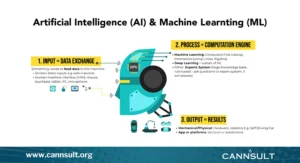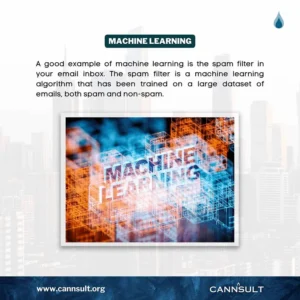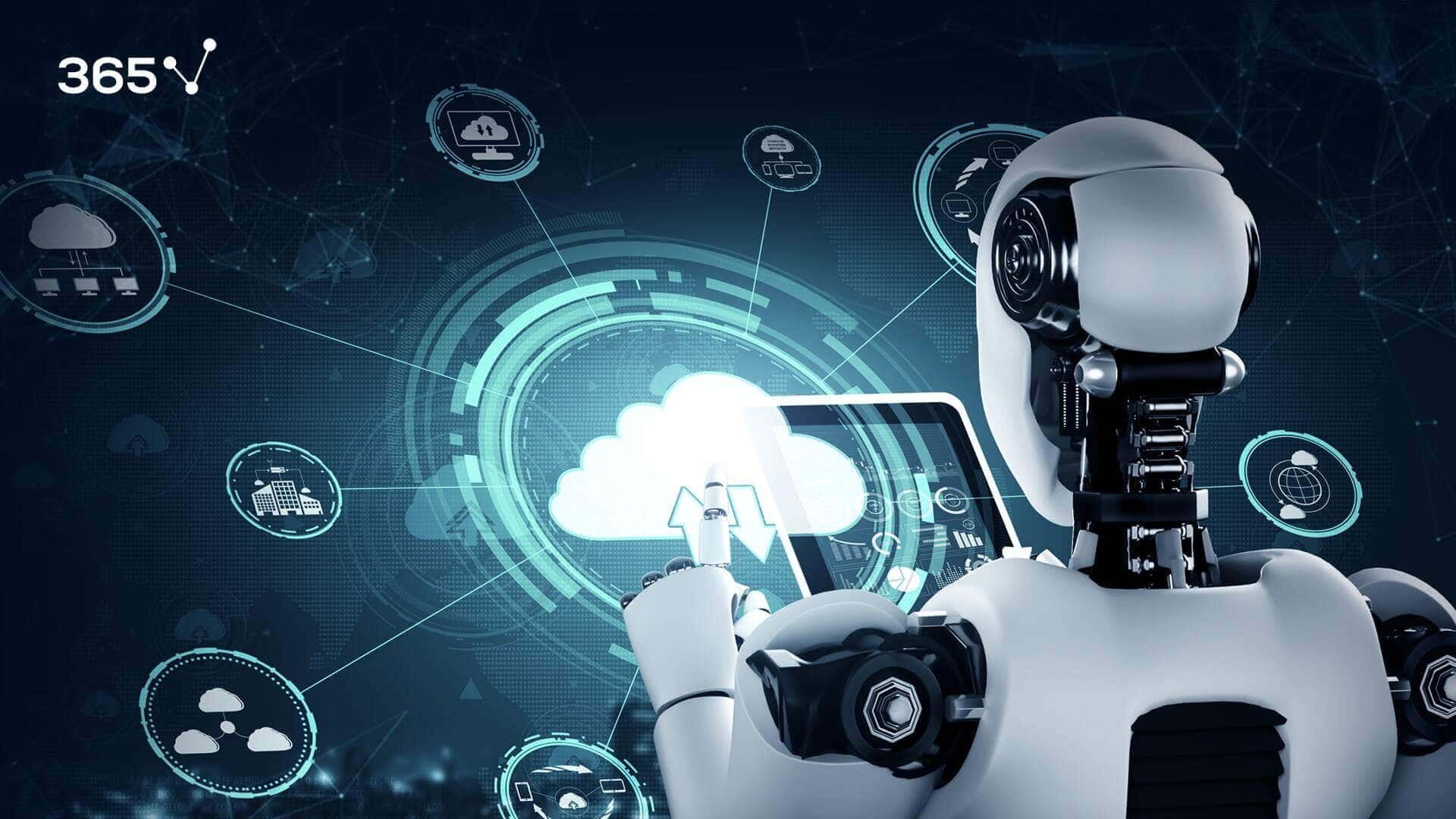Artificial Intelligence (AI) and Machine Learning (ML) are no longer just buzzwords; they are transformative forces reshaping industries, including manufacturing.
In this article, we’ll dive into the future of AI and ML, exploring what lies ahead in the next decade. From understanding the basics to how these technologies are revolutionizing manufacturing, we’ll uncover the trends, challenges, and opportunities that will define the future landscape.

What is Artificial Intelligence (AI)?
AI refers to the development of computer systems that can perform tasks that typically require human intelligence, such as visual perception, speech recognition, decision-making, and language translation.
It encompasses a wide range of technologies and techniques, including machine learning, natural language processing, computer vision, and robotics.
Categories of AI
-
Narrow AI (Weak AI): This type of AI is designed to perform a specific task or set of tasks. It excels in areas like speech recognition (Siri or Alexa) and image classification (Google Photos).
-
General AI (Strong AI): General AI possesses human-like cognitive abilities and can understand, learn, and apply knowledge across a wide range of tasks. Achieving true general AI remains a complex and ongoing challenge.
Superintelligent AI: This hypothetical form of AI would surpass human intelligence and capabilities in every way. It’s a topic of philosophical debate and still exists primarily in the realm of science fiction.
Manufacturing Success and AI
In the manufacturing sector, AI is poised to drive significant advancements.
Here’s a glimpse of what the future holds:
-
Predictive Maintenance: AI-driven predictive maintenance uses sensor data and machine learning algorithms to forecast equipment failures. This means manufacturers can proactively address issues, minimize downtime, and reduce maintenance costs.
-
Quality Control: AI-powered computer vision systems can inspect products with incredible precision, identifying defects and deviations from standards. This not only enhances product quality but also reduces waste.
-
Supply Chain Optimization: AI algorithms can analyze vast amounts of data to optimize supply chains. This includes demand forecasting, inventory management, and route optimization, resulting in cost savings and improved efficiency. Customization and Personalization: AI enables the mass customization of products by analyzing customer data and preferences. Manufacturers can create tailored products at scale, meeting individual customer demands.
Managing Your AI Data
As AI continues to evolve, the volume of data generated and processed by AI systems is skyrocketing. Managing this data is becoming increasingly important for successful AI implementations.
Here are key aspects to consider:
-
Data Collection: Gathering high-quality data is essential. Ensure that data is diverse, representative, and unbiased, as biased data can lead to biased AI outcomes.
-
Data Storage: Managing vast datasets requires robust storage solutions. Cloud-based storage and distributed data systems are common choices for AI data storage.
-
Data Security: Protecting AI data from breaches and unauthorized access is critical. Implement encryption, access controls, and regular security audits to safeguard your data.
-
Data Governance: Establish clear data governance policies and practices. Define data ownership, access permissions, and data lifecycle management.
The Future of AI and ML
As we peer into the next decade, the horizon of AI and ML appears both promising and transformational. The relentless pursuit of innovation, combined with a growing understanding of the potential of artificial intelligence and machine learning will undoubtedly reshape industries and societies in ways we can scarcely imagine today.
The Marriage of AI and Manufacturing
In the manufacturing sector, AI and ML are set to become indispensable tools. Manufacturing processes are evolving from traditional, rule-based systems to smart, data-driven operations.
Here’s how AI and ML will continue to drive manufacturing success in the coming years:
1. Real-Time Decision-Making
AI algorithms will become even more adept at processing vast datasets in real time. Manufacturers will harness this capability to make split-second decisions on the factory floor, optimize production, and respond swiftly to changes in demand or supply.
2. AI-Driven Quality Control
The era of zero-defect manufacturing is on the horizon. Machine learning models will scrutinize products with unparalleled precision, spotting microscopic defects or deviations from standards that the human eye could never detect. This not only enhances quality but also reduces waste and rework.
What is Machine Learning?
Machine Learning is a subset of AI that focuses on the development of algorithms and statistical models that enable computer systems to improve their performance on a specific task through learning from data. It is a crucial component of AI, powering many AI applications and systems.

Managing Your AI Data
As AI continues to evolve, the volume of data generated and processed by AI systems is skyrocketing. Managing this data is becoming increasingly important for successful AI implementations.
Here are key aspects to consider:
-
Data Collection: Gathering high-quality data is essential. Ensure that data is diverse, representative, and unbiased, as biased data can lead to biased AI outcomes.
-
Data Storage: Managing vast datasets requires robust storage solutions. Cloud-based storage and distributed data systems are common choices for AI data storage.
-
Data Security: Protecting AI data from breaches and unauthorized access is critical. Implement encryption, access controls, and regular security audits to safeguard your data.
-
Data Governance: Establish clear data governance policies and practices. Define data ownership, access permissions, and data lifecycle management.
The Future of AI and ML
As we peer into the next decade, the horizon of AI and ML appears both promising and transformational. The relentless pursuit of innovation, combined with a growing understanding of the potential of artificial intelligence and machine learning will undoubtedly reshape industries and societies in ways we can scarcely imagine today.
The Marriage of AI and Manufacturing
In the manufacturing sector, AI and ML are set to become indispensable tools. Manufacturing processes are evolving from traditional, rule-based systems to smart, data-driven operations.
Here’s how AI and ML will continue to drive manufacturing success in the coming years:
1. Real-Time Decision-Making
AI algorithms will become even more adept at processing vast datasets in real time. Manufacturers will harness this capability to make split-second decisions on the factory floor, optimize production, and respond swiftly to changes in demand or supply.
2. AI-Driven Quality Control
The era of zero-defect manufacturing is on the horizon. Machine learning models will scrutinize products with unparalleled precision, spotting microscopic defects or deviations from standards that the human eye could never detect. This not only enhances quality but also reduces waste and rework.

3. Human-AI Collaboration
As AI systems become more sophisticated, they will collaborate seamlessly with human workers. AI-powered assistants will provide real-time guidance, monitor worker safety, and optimize task allocation. This partnership between humans and AI will boost productivity and reduce errors.
4. Supply Chain Resilience
Manufacturers will rely on AI to build more resilient and responsive supply chains. Predictive analytics will enable companies to foresee disruptions, reroute shipments, and adapt to unforeseen challenges, ensuring a continuous flow of materials and components.
5. Sustainable Manufacturing
AI and ML will play a pivotal role in achieving sustainability goals. Smart manufacturing processes will minimize energy consumption, reduce waste, and optimize resource usage. Manufacturers will use AI to identify eco-friendly materials and design products with a lower environmental footprint.
Challenges on the Horizon
As the future of AI and ML unfolds, several challenges will need to be addressed:
1. Ethical Concerns
The ethical use of AI is a pressing issue. Ensuring AI systems make fair, unbiased decisions and respect privacy will require ongoing vigilance and regulation.
2. Data Privacy and Security
As AI systems rely on vast amounts of data, protecting that data from breaches and cyberattacks becomes paramount. Robust data privacy and security measures are essential.
3. Regulatory Landscape
Governments around the world are working on regulations for AI and ML. Navigating this evolving regulatory landscape will be a challenge for businesses.
4. Workforce Adaptation
The integration of AI and ML into industries will require a skilled workforce capable of working alongside AI systems. Preparing the workforce for this change is an ongoing challenge.
5. AI Transparency
As AI systems become more complex, ensuring their transparency and explainability is crucial. The ability to understand and trust AI decisions will be essential for their acceptance.

The Role of Quantum Computing
In the coming decade, the intersection of AI and quantum computing promises groundbreaking advancements. Quantum computers, with their ability to perform calculations at speeds unimaginable to classical computers, will unlock new possibilities in AI and ML:
1. Advanced Data Processing
Quantum computers will handle massive datasets with lightning speed, enabling AI models to train faster and make even more accurate predictions.
2. Optimized Algorithms
Quantum algorithms will fine-tune AI models, optimizing their performance and efficiency. Complex problems that once seemed insurmountable will become solvable.
3. Drug Discovery and Materials Science
AI combined with quantum computing will revolutionize drug discovery and materials science. Researchers will use these tools to simulate molecular interactions, accelerating the development of life-saving drugs and groundbreaking materials.
Preparing for the Future
To harness the full potential of AI and ML in the next decade, businesses and industries must adopt forward-thinking strategies:
1. Invest in AI Education
Fostering a culture of learning and upskilling is essential. Businesses should invest in training programs to equip their workforce with the AI knowledge and skills needed for the future.
2. Collaborate and Innovate
Embrace collaboration with technology partners, startups, and research institutions. Co-creation and innovation will drive the development of AI solutions tailored to specific industry needs.
3. AI Governance and Ethics
Establish robust AI governance frameworks and ethical guidelines within your organization. Ensure transparency, fairness, and accountability in AI decision-making processes.
4. Data Strategy
Develop a comprehensive data strategy that includes data collection, storage, security, and governance. High-quality, diverse, and well-managed data is the lifeblood of AI and ML.
5. Stay Agile and Adaptive
The pace of change in the AI and ML landscape is relentless. Be prepared to adapt, evolve, and embrace emerging technologies as they mature.
Conclusion
The future of AI and ML is not a destination but a continuous journey of innovation, challenges, and opportunities. It’s a journey that will touch every facet of our lives, from how we manufacture goods to how we discover new medicines, and from how we make decisions to how we protect our privacy.
As we stand at the threshold of a new era, the key to success is not just adopting AI and ML but doing so with a clear understanding of the ethical, regulatory, and societal implications. It’s about empowering our workforce, safeguarding our data, and embracing the limitless possibilities that AI, ML, and quantum computing offer.
The next decade will witness a fusion of human ingenuity and technological advancement, and those who embark on this journey with curiosity, resilience, and a commitment to ethical AI will shape a future that is brighter, smarter, and more connected than ever before.
Welcome to the future of AI and ML—a future where innovation knows no bounds.










